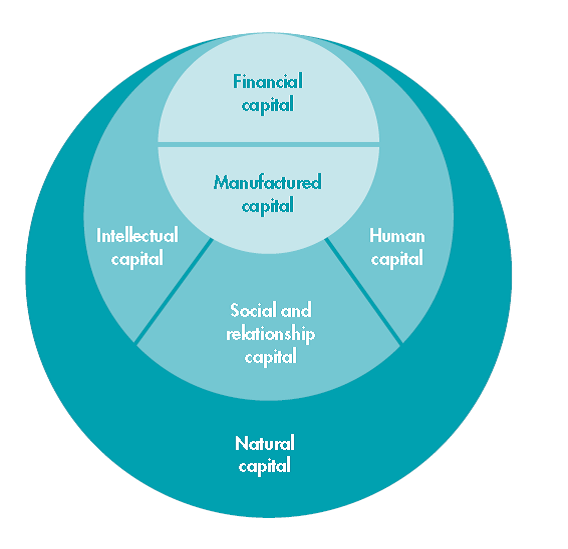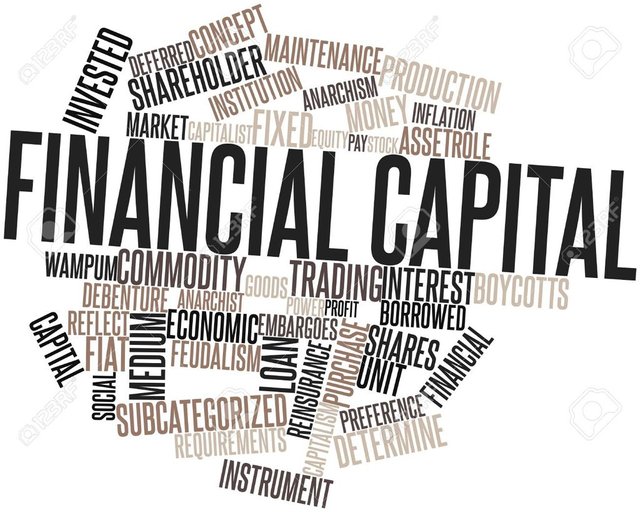Manufactured and Financial Capital - 3 of 3 in a series of posts on the Six Capitals
This post brings to a close the series on the Capitals which are used as a basis for Integrated Management and Integrated Reporting, that forward-looking approach to corporate governance that companies are moving to because it helps them to better articulate value and monitor their strategic journey to achieve sustainable value creation. Have a look at my first post on Integrated Reporting for a reminder of how it all fits together. Some extremely interesting comments on that post have inspired some follow-ups which you'll see in the weeks to come.
If you recall, one of the many representations of the Capitals has them interlinked within the overall source of all Capital (and therefore value), Natural Capital:

Source: http://integratedreporting.org/wp-content/uploads/2013/03/IR-Background-Paper-Capitals.pdf
Manufactured Capital
Manufactured Capital is probably the simplest of the Capitals to relate to, because, well, it’s tangible. We can touch it. Basically it represents all manufactured physical objects (as distinct from natural physical objects) available to an organisation for use in the production of goods or the provision of services, including:
- buildings
- equipment
- infrastructure
The critical point here is that this is from the perspective of an organisation seeking to articulate how it creates value, so this is about what is available to the organisation in terms of manufactured physical objects which the organisation uses to create its value. It’s not about the end product; it’s about the means of production.

Financial Capital
In a nutshell, Financial Capital is the pool of funds that is:
- available to an organisation for use in the production of goods or the provision of services
- obtained through financing or generated through operations or investments.
It’s pretty easy to conceptualise the relationship between Manufactured Capital and Financial Capital – you need a thing to make some stuff, so you buy the thing using some money.

Link between Manufactured and Financial Capital and Steemit
As we come to end of this first Governance/Integrated Reporting/Capitals discussion, I see this as the easiest entry point for a discussion on how Steemit can directly influence the value discussion. Frankly, the idea of an immediate, trusted, Peer-to-Peer transaction and/or a Smart Contract really should make the hearts of most CFOs go pitter-patter, in comparison with complex financing arrangements where either the financier, the supplier or the customer could default in some way. Finance is built around risk management, and the blockchain takes many elements of risk out of the equation, not to mention third parties.
Cryptocurrency and the blockchain also introduce the potential for microtransactions, which would enable participation in the formal economy by members of society whose income precludes them from any possibility of, say, buying a toaster with a credit card. In Africa, that reality is all too present - in South Africa alone some estimates put the informal economy at as much as 40% of the formal economy.
Where to from here?
Now that we've touched on the basis for expressing sustainable value holistically, I'll be looking at strategy and how it can be used to create sustainable value (or not), the Integrated Reporting journey and how it ties into the Global Reporting Initiative, how the King IV launch some useful online resources for companies to use which help them to see how far they already are in their sustainability journeys (and how far they have to go), the Sustainable Development Goals and how the private sector can help to realise them...all, I hope, in the context of how the blockchain and Steem can be used to accelerate sustainable value creation.